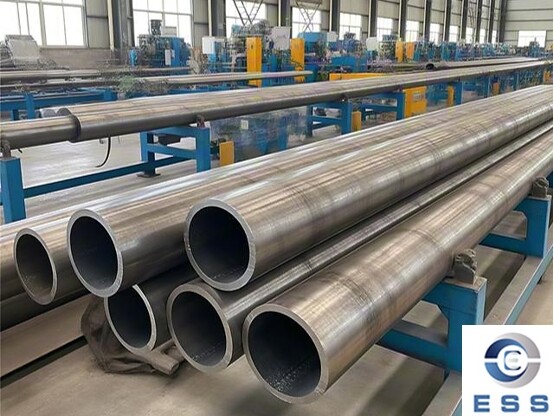Small-diameter seamless
steel pipe refers to seamless steel pipe with smaller outer diameters.
Usually, steel pipes with an outer diameter of less than 89mm and a wall
thickness of more than 4mm are called small-diameter seamless steel pipes. This
type of steel pipe is often used to manufacture mechanical structures or
hydraulic equipment. It has the characteristics of high dimensional accuracy
and good surface finish, which can save machining time and improve material
utilization and product quality.

The inspection standards for small-diameter
seamless steel pipes involve appearance quality, dimensional deviation,
mechanical properties and chemical composition. Ensure that the steel pipe is
defect-free, meets design requirements, withstands external forces and has
corrosion resistance. The inspection standards for small-diameter seamless
steel pipes are an important basis for ensuring the quality and safety of steel
pipes. Strict inspection is required during purchase and use to ensure quality
and safety.
Appearance quality inspection
The appearance quality of small-diameter
seamless steel pipes is the primary inspection standard. The surface of the
steel pipe should be smooth, free of defects such as cracks, folds, and tooth
marks, and should be free of oxide scale and irritating odor. The ends of the
steel pipe should be cut straight, and there should be no defects such as
cracks, scars and ovals on the surface, nor should there be defects that cause
pitting during use. These appearance quality inspections are to ensure that the
steel pipe can withstand pressure, resist corrosion, and have a long service
life during use.
Dimensional deviation inspection
The dimensional deviation of small-diameter
seamless steel pipes is also one of the important inspection standards. The
outer diameter, inner diameter and wall thickness of the steel pipe should meet
the design requirements, and the deviation value should be within the specified
range. Generally speaking, the outer diameter deviation is generally not more
than plus or minus 0.2mm, the inner diameter deviation is generally not more
than plus or minus 0.1mm, and the allowable deviation of the wall thickness is
generally not more than plus or minus 12.5%. These dimensional deviation
inspections are to ensure that the steel pipe can meet the engineering
requirements during use and ensure the normal operation of the pipeline system.
Mechanical property inspection
The mechanical properties of small-diameter
seamless steel pipes are a key part of the inspection standards. Mechanical
properties include indicators such as tensile strength, yield strength, and
elongation. The tensile strength should meet the design requirements, the yield
strength should not be less than a certain proportion of the tensile strength,
and the elongation should not be less than a certain percentage. The inspection
of these mechanical properties is to ensure that the steel pipe can withstand
and resist damage when subjected to external forces, and to ensure the safety
and stability of the pipeline system.
Chemical composition analysis
The chemical composition of small-diameter
seamless steel pipes is also an important part of the inspection standards. The
chemical composition of the steel pipe should meet the design requirements,
including the content of elements such as carbon (C), silicon (Si), manganese
(Mn), sulfur (S), phosphorus (P), chromium (Cr), nickel (Ni), and copper (Cu).
The analysis of chemical composition is to ensure that the material of the
steel pipe meets the engineering requirements and has sufficient corrosion resistance
and mechanical properties. The specific methods can be chemical analysis and
instrumental analysis (such as infrared C-S instrument, direct reading
spectrometer, N-O instrument, etc.).
Nondestructive testing inspection
Ultrasonic testing, eddy current testing,
magnetic particle testing, electromagnetic ultrasonic testing, and penetrant
testing are used to detect crack defects on the surface and inside of steel
pipes.
Summary
In summary, the inspection standards for
small-diameter seamless steel pipes cover multiple aspects such as appearance
quality, dimensional deviation, mechanical properties, and chemical
composition. The implementation of these inspection standards is to ensure the
quality and safety of steel pipes and to ensure the normal operation and
service life of the pipeline system. Therefore, when purchasing and using
small-diameter seamless steel pipes, inspection and acceptance should be
carried out in strict accordance with relevant standards and specifications to
ensure the quality and safety of steel pipes.
Read more: Seamless Steel Pipe Sizes













 Eastern Steel Manufacturing Co.,Ltd not only improve product production and sales services, but also provide additional value-added services. As long as you need, we can complete your specific needs together.
Eastern Steel Manufacturing Co.,Ltd not only improve product production and sales services, but also provide additional value-added services. As long as you need, we can complete your specific needs together.










